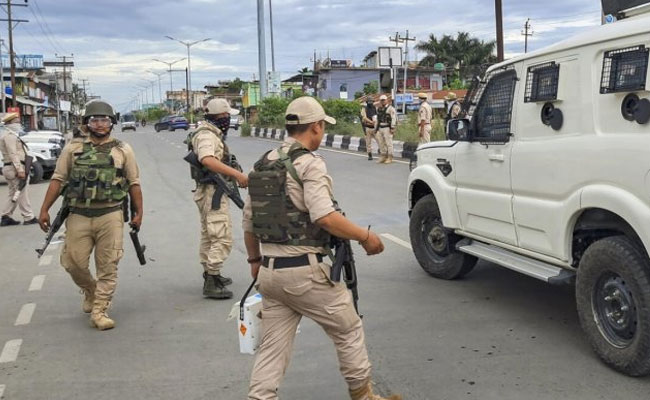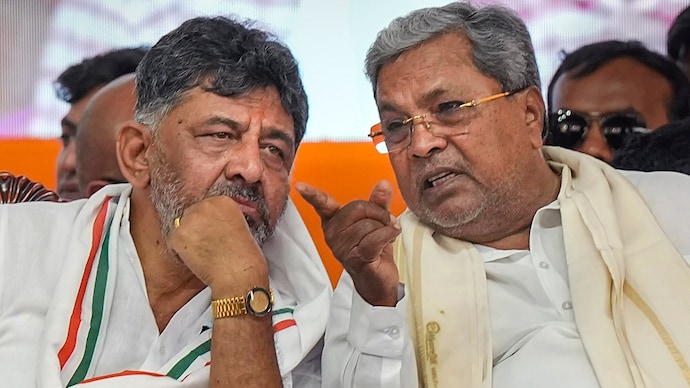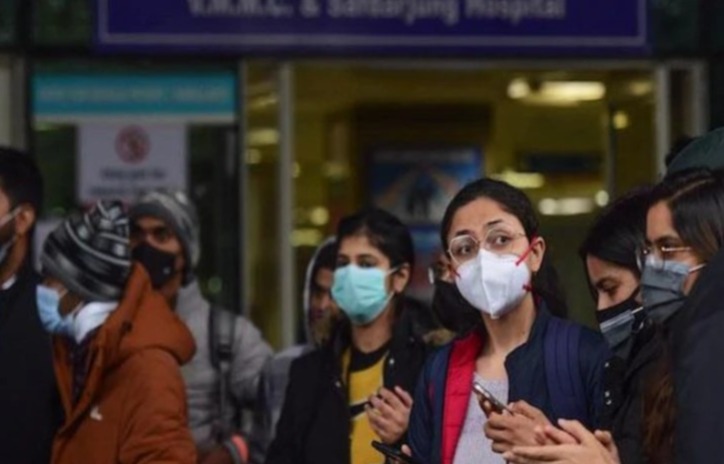Imphal (PTI): In a fresh incident of arms looting, a mob comprising the majority community broke into a police armoury and stole weapons, including AK and 'Ghatak' series of assault rifles, and over 19,000 bullets of various calibres, officials said.
The incident took place at the battalion headquarters of the 2nd India Reserve Battalion (IRB) located at Naranseina in Bishnupur district. A crowd had gathered there to march towards Churachandpur where tribals were planning to carry out a mass burial of their people killed in ethnic clashes that broke out in the state on May 3, they said.
More than 19,000 rounds of bullets of different calibres, an AK series assault rifle, three 'Ghaatak' rifles, 195 self-loading rifles, five MP-5 guns, 16 9mm pistols, 25 bulletproof jackets, 21 carbines, 124 hand grenades among others were looted by the mob, officials said.
The mass burial programme by the tribals had sparked fresh tension in the strife-torn state with the majority community opposing the move.
More than 25 people were injured in clashes as the Army and RAF personnel fired tear gas shells in Kangvai and Phougakchao areas in Bishnupur district on Thursday to stop processions on their way to the proposed burial site in violation of restrictions on gatherings, officials said.
The majority community had also attempted to loot two other armouries located in the state capital but the attempts were foiled.
The Manipur High Court, in an extraordinary hearing held on Thursday morning, had stayed the proposed mass burial even though the Kuki community claimed that they had postponed the programme after discussions with the Union home ministry.
More than 160 people lost their lives and several hundred were injured since the ethnic clashes broke out in Manipur on May 3, after a 'Tribal Solidarity March' was organised in the hill districts to protest against the Meitei community's demand for Scheduled Tribe (ST) status.
Meiteis account for about 53 per cent of Manipur's population and live mostly in the Imphal Valley. Tribals -- Nagas and Kukis -- constitute little over 40 per cent and reside in the hill districts.
Let the Truth be known. If you read VB and like VB, please be a VB Supporter and Help us deliver the Truth to one and all.
Bengaluru: In a significant move towards enhancing disaster preparedness, the Karnataka State Natural Disaster Monitoring Centre (KSNDMC), in collaboration with UNICEF, launched the Karnataka State Disaster Risk Reduction Roadmap (KSDRR) 2025-2030 on Monday, marking the International Day for Disaster Risk Reduction.
With this initiative, Karnataka has become the fifth state in India to launch the Disaster Risk Reduction Roadmap, following Bihar, Andhra Pradesh, Tamil Nadu and Assam, as reported by The New Indian Express.
The new roadmap is designed to mitigate the impact of natural disasters and reduce the state’s vulnerability. Over the past five years, Karnataka has suffered an estimated Rs 1 lakh crore in losses due to floods, droughts, lightning, hailstorms, fire, and other calamities. Addressing these challenges, Mullai Muhilan, Director of KSNDMC, emphasised that the goal of the KSDRR is to implement a systematic approach to preventing and managing such disasters.
“The theme on this day is ‘Fund Resilience, Not Disasters’, and that is why this roadmap is a framework of existing solutions to reduce and prevent losses by mitigating floods, drought, earthquakes, heat waves and so on,” TNIE quoted Muhilan as saying.
The KSDRR outlines a multi-phase strategy, which includes a vulnerability profile of Karnataka, highlights DRR developments, initiatives taken in the state, financial arrangements, and defines the roles and responsibilities of stakeholders as per the National Disaster Management Act, 2005.
The roles and responsibilities, work implementation in the road map are based on three major milestones divided to achieve in five years. All departments, gram panchayats have prepared disaster management plans with latest data as baseline information.
In milestone 2 for the year 2027-28, the roadmap envisions that the state has to collaborate and partner with various stake holders from local to global level. In milestone 3, for the year 2029-30, it mentions reducing infrastructure damage, human and animal deaths, casualties by 75%.
“Currently, KSNDMC has applications including Varuna Mitra, dedicated mainly to providing weather forecast to farmers across the state. Similarly, we have Megha Sandesha, a mobile app developed in collaboration with the Indian Institute of Science. This app was created to mitigate urban floods and it provides information to various government bodies especially BWSSB, and others. We are still working on this app to provide information and data to BDA, GBA on the areas that might flood in the future. They can use this data before giving clearance to buildings of layouts,” explained Muhilan.
As part of the roadmap, several government departments have been directed to work towards risk identification, risk reduction, preparedness, financial protection, and resilient recovery. For instance, the Education Department will be responsible for developing school-level disaster management plan.
The roadmap also outlines a robust infrastructure for real-time disaster monitoring. Karnataka has already installed 6,500 telemetric rain gauge stations at the gram panchayat level, alongside 850 telemetric weather stations at the taluk level. Other installations include lightning and thunderstorm sensors, water level sensors in Bengaluru and surrounding cities, and seismic sensors at major dam sites.




